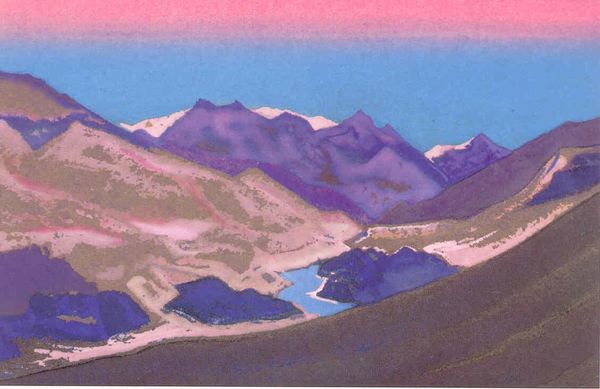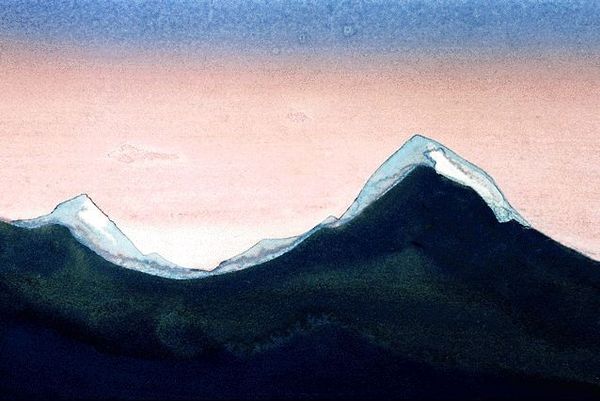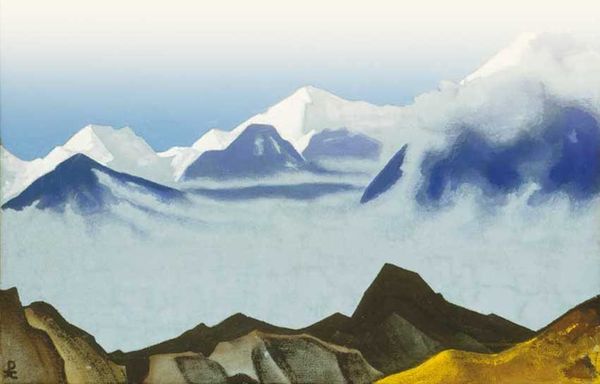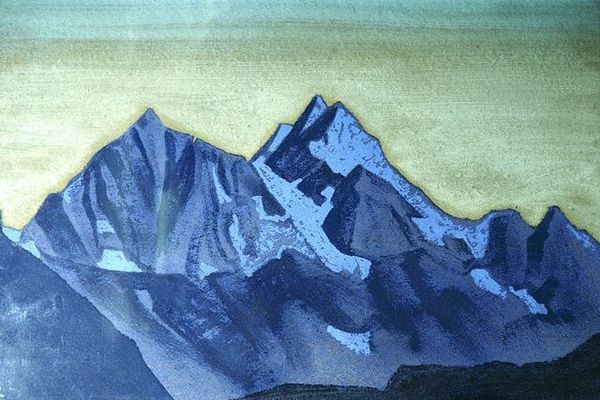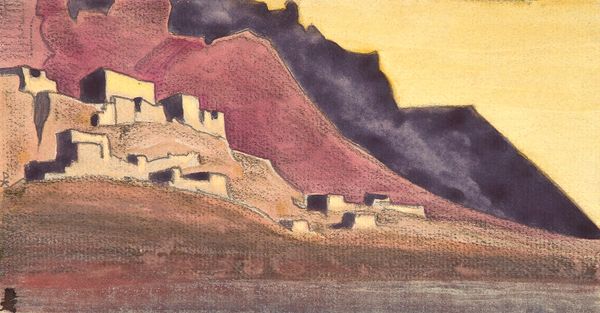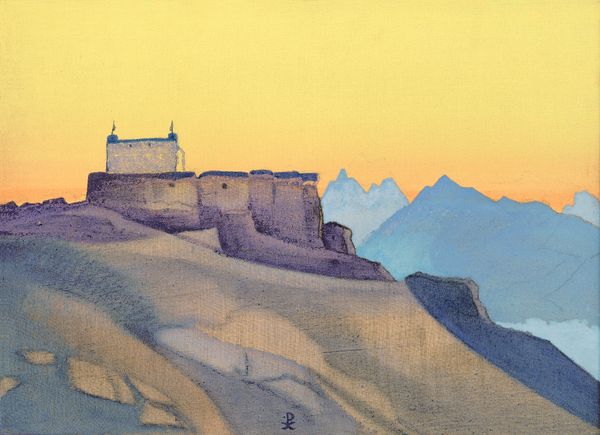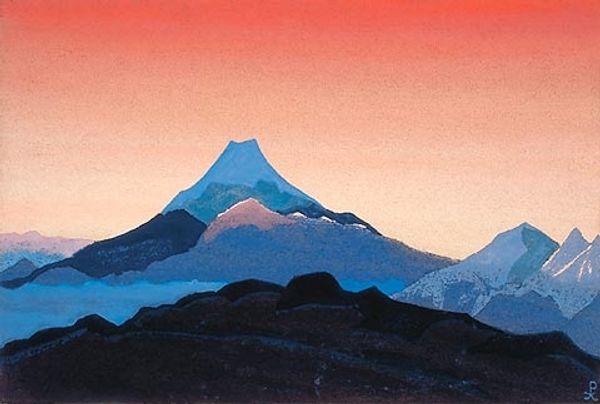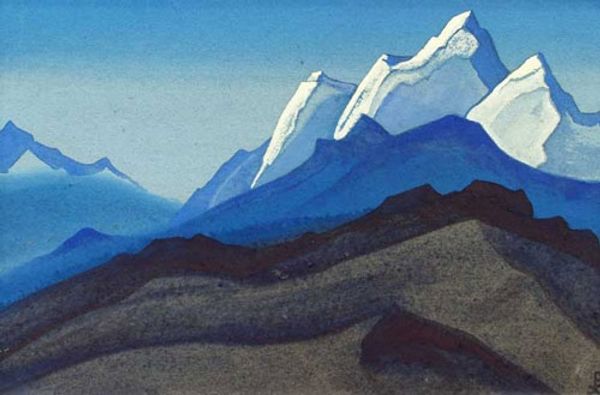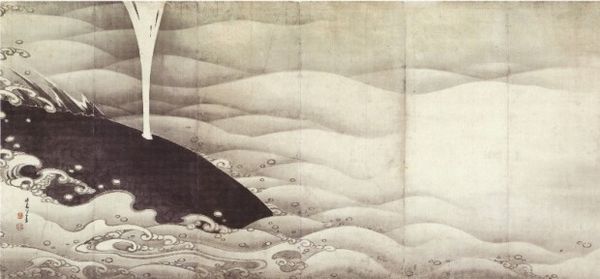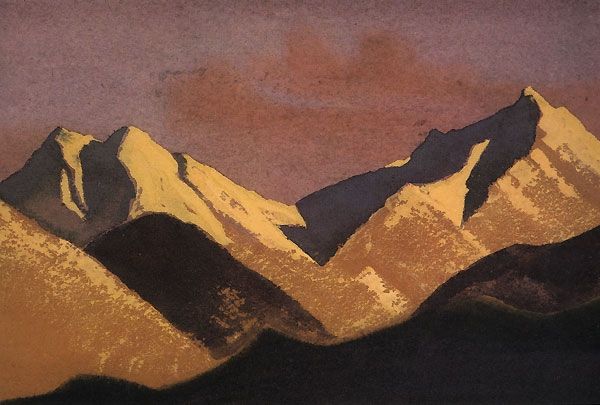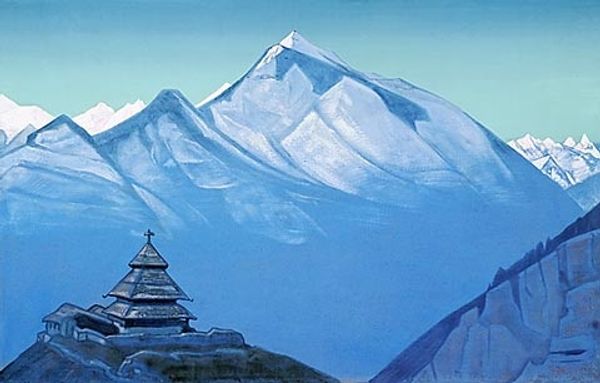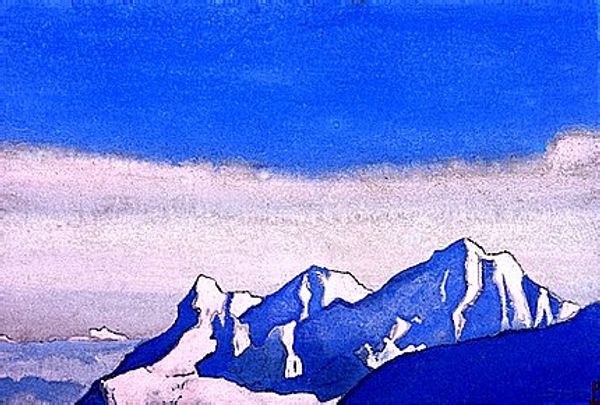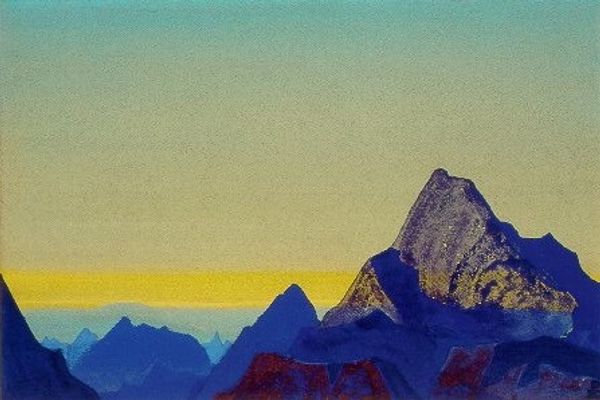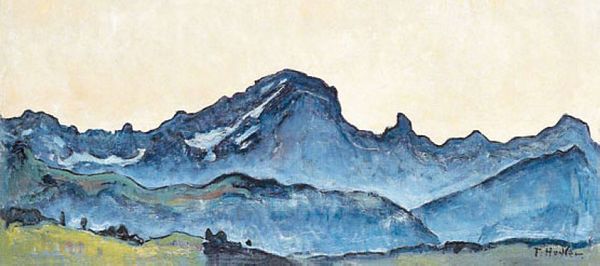
Dimensions: 72.4 x 118.1 cm
Copyright: Public domain
Curator: This is Nicholas Roerich's "Castle of King Gesar," an oil painting created in 1929. Roerich was a fascinating figure—artist, writer, philosopher, and public activist, deeply invested in Eastern spiritualities. Editor: The subdued palette—blues and browns dominating, softened by a hazy sky—evokes a palpable sense of stillness. The almost geometric form of the structure against the rugged mountains is quite striking. Curator: Roerich's paintings, especially those from his travels through Asia, are far more than landscapes. He was influenced by the Theosophical Society and sought to depict spiritual truths through his art. King Gesar, in Tibetan epic tradition, is a warrior-king, a figure central to Tibetan Buddhism. This castle therefore, isn't simply a place; it's a symbolic representation of Gesar's enlightened rule. Editor: The painting’s strength truly lies in its composition: The castle’s placement, almost embedded within the rocks, emphasizes the unity between human construction and the natural world. Also, I’m drawn to the textures he creates using oil. The surface seems almost granular, adding to the mystical feeling of a distant, timeless place. Curator: I would suggest it invites discussion around how history and mythology converge, especially in a figure like King Gesar. Was he a real historical person? And if not, how does the pervasiveness of the story construct its own truths and political impacts? Roerich himself sought to connect this spiritual heroism of the past with his own peace activism in the present, especially leading up to the Roerich Pact. Editor: The stark lines of the building and the monumentality of the landscape almost feels like a stage set. Are we meant to admire the figure, to stand back in awe of what it might have represented? Curator: Indeed. It urges us to look beyond surface appearances and ponder larger existential questions. Editor: Ultimately, this exploration has revealed the potent relationship between formal artistic expression and Roerich’s deeper social convictions, highlighting how visual language can serve as a vessel for larger ideologies.
Comments
No comments
Be the first to comment and join the conversation on the ultimate creative platform.
